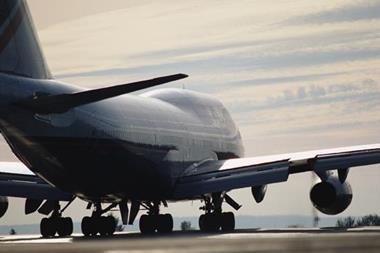What do the London Olympics, Terminal 5 and tackling youth crime have to do with each other? Answer: They all represent huge challenges that require new ways of thinking about behaviour and perception aspects of risk
VIDEO: StrategicRISK talks to David Hancock
Most people probably consider the project that added a fifth terminal to Britain’s Heathrow airport a complete disaster. It’s only natural, given all the bad press around British Airway’s handling of the opening and the furore surrounding thousands of lost bags—which continues to drag on. It may have escaped some people that the delivery of the £4.3bn building was on time and to budget.
That small wonder may have been due in part to an interesting concept of collaborative risk taking that was adopted by the developers. Rather than chopping up the risks associated with the project and parcelling them out to different companies to deal with individually, stakeholders worked in a more integrated way that made it harder for them to blame each other when things went wrong.
David Hancock, who worked for Halcrow when it was consulting on the Terminal 5 project, explained the approach: ‘Right at the procurement stage we picked those companies that would look at working in a completely different manner to the adversarial way the construction companies had worked in the past.’
BAA owned all the risk and loaned it out to contractors for a short time. According to Hancock, the risks and the rewards were accepted by the people best able to handle them. If any of the companies took more time or the risks weren’t mitigated then money escaped from the reward pot. ‘What happened is that people saw the money in the reward pot shrinking and they got involved and helped each other out,’ he said.
“What we are trying to do is bring back the economic and social fabric of London.
Now director of risk and assurance for the London Development Agency, Hancock faces a new type of risk, but he continues to incorporate the behavioural aspects.
He described his role: ‘What we are trying to do is bring back the economic and social fabric of London. So that we have a community that is diverse in all its areas but as such that people can live together harmoniously.’
One of the greatest threats to life in the UK’s capital is gun and knife crime, generally associated with the development of an underclass living on the fringes of society. For Hancock the biggest risk is that some people become so disenfranchised that they don’t care if they go to jail. Rather than looking at how much it costs society to bring these people back in he prefers to think in terms of what it costs for them to remain outside. ‘And that’s far more difficult from a risk point of view,’ he said.
‘If we’re not careful, if we go for pure hard economics we will not meet the expectations of the disenfranchised,’ he added.
In his role with the LDA, Hancock is close to another major project designed with an eye on tackling some of these problems. The London Olympics 2012 is another great British project with a lot to live up to. Many in the administration hope the Games will help regenerate one of the most deprived parts of the city, but the plans have already run over budget and attracted the intense glare of public scrutiny. Hancock warned: ‘There is a societal benefit that has to be worked on to ensure that we actually achieve what we set out to do in the beginning.’




















No comments yet